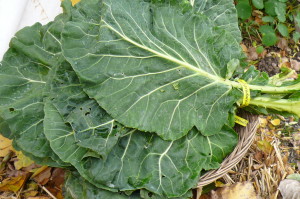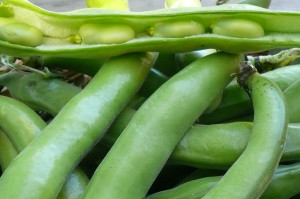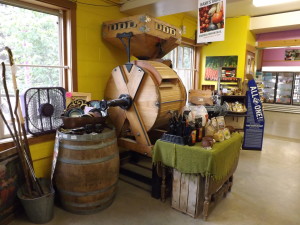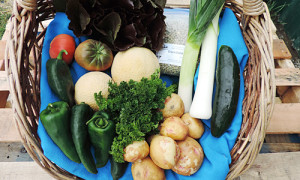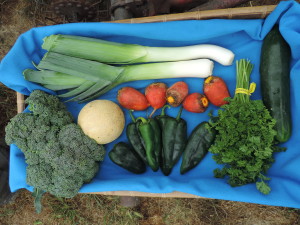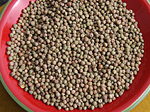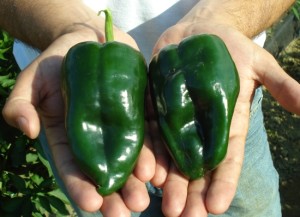Standard Box
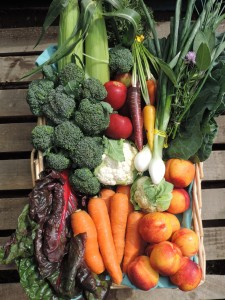
Juice Carrots, 3 lb
Red Chard, 1 bu
Collard Greens, 1 bu
Rainbow Carrots, 1 bu
Nectarines, 3 lb
Corn, 2
Broccoli, 2 lb
Mixed Herbs, 1 bu
Apples, 1.5 lb
Green Onions, 1 bu
Cauliflower, 2 lb
Small Box
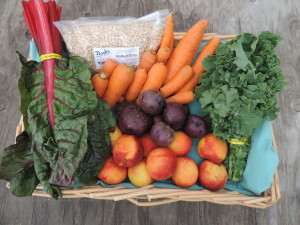
Juice Carrots, 3 lb
Green Kale, 1 bu
Rolled Oats, 2 lb
Nectarines, 3 lb
Purple Potatoes, 2 lb
Red Chard, 1 bu
Juice Carrots
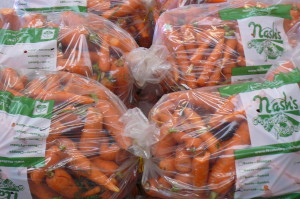
Juice is a super way to get lots of nutrients into your body FAST. You are, in essence, separating the water portion of a fruit or veggie from the pulp portion, and just consuming the liquid, along with a concentration of the vitamins and minerals. There are those who promote vegetable juice as the main way people should get their nutrients, but then you are not eating the good fiber that veggies and fruit also provide. We recommend juicing as an addition to your healthy diet, and to give you a real boost of energy when you need one.
If you don’t have a juicer, you can run fruits and veggies through a food processor, than strain the resulting slurry through a mesh strainer. A little more work, perhaps, but then again, juicers can be expensive and they take up room on your kitchen counter. On the other hand, Farmer Nash wouldn’t dream of not having a juicer, especially as the weather changes from summer to fall and into winter, and he needs that additional vitamin boost as he works outside.
Carrots are a terrific base ingredient for any juice, but if you are diabetic, be careful adding items like apples, beets and carrots to your juice. Yes, they make the juice more palatable, but they have a high sugar content. You can juice almost any vegetable, including cabbage, kale, collards, parsley, turnips, kohlrabi, etc. Most people find the rich earthy flavor of those veggies too much to drink, but if you want to try them, you can cut the earthiness by adding half a lemon.
One important tip: Drink your juice FRESH. It starts to oxidize almost immediately and lose precious vitamins and minerals. Try to drink it within 10 minutes of preparation for maximum nutrition.
Carrot-Apple-Ginger Juice
Besides being delicious, this juice is also incredibly healthy with vitamins A, K and beta carotene from the carrots, vitamin C and polyphenols from the apples, and anti-inflammatory benefits from the ginger. Carrots are also high in B complex vitamins like folate and many minerals including calcium, copper, magnesium, potassium, phosphorus, and iron. Juice together 3 carrots, one medium apple and about 1 inch of peeled ginger.
Enjoy!
Purple Potatoes

Purple potatoes are an invaluable staple in South American kitchens. Native to the Lake Titicaca region of Peru and Bolivia, they are among thousands of varieties that have been cultivated for nearly 8,000 years in the Andes. Their diversity, resistance to disease, and ability to withstand harsh conditions has enabled them to evolve into a 21st century food crop.
The purple potato can be utilized in any cuisine that would otherwise use potatoes. Purple potatoes can be roasted, braised, boiled, baked, and fried for chips. They pair well with savory herbs, garlic, pork, poultry, artichokes, both rich and mild cheese, other starchy vegetables such as corn and shelled beans and, of course, salad greens.
Purple Potato Gratin
1 1/2 cups milk
1 Tbsp. butter
2 Tbsp. flour
2/3 cup grated cheddar cheese
2 lbs. purple potatoes, unpeeled and sliced thinly
1 cup sliced shallots
1 Tbsp. olive oil
4 slices bacon
1/2 cup grated Parmesan cheese
Salt/pepper to taste
To make the gratin sauce, place the butter into a small pan and melt. Add flour and stir to combine, cooking over medium heat for about 1 minute. Whisk in the milk and stir until thickened. Stir in cheese; when melted remove from heat. Salt and pepper to taste.
Sauté the shallots in the olive oil until slightly brown and caramelized. Remove from the pan. Add bacon and cook until cooked through but not crispy (it will get crispy later). Cut bacon into 1 inch pieces.
Grease a shallow baking dish. Add half of the sliced potatoes to the dish. Sprinkle the shallots over the potato layer. Add the remaining potato slices to the dish. Pour the gratin sauce over the top of the potatoes, spooning into any visible cracks and crevices. Top with Parmesan cheese. Add the bacon over the top. Place into a preheated 350 degree oven for 40 minutes.


